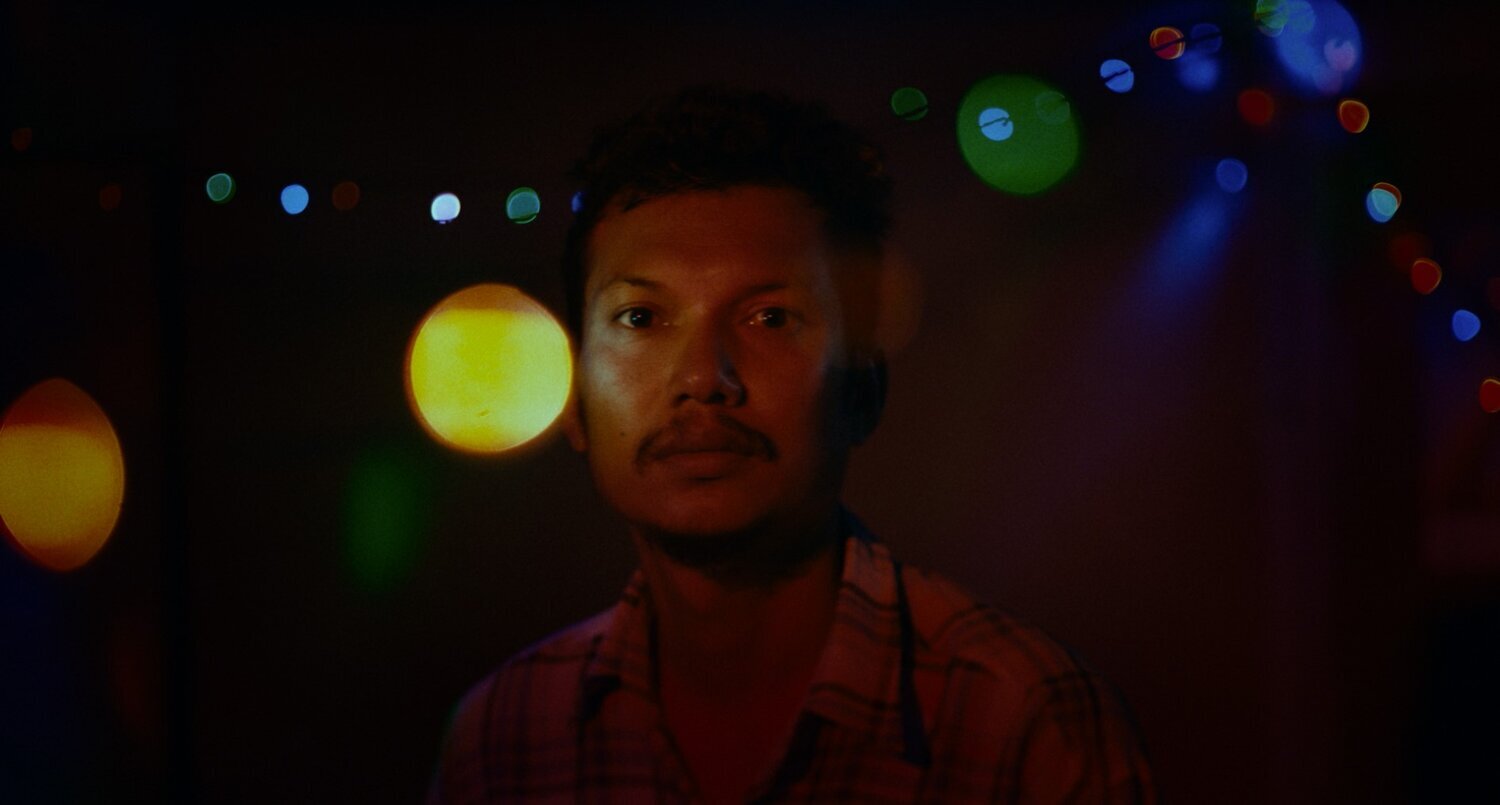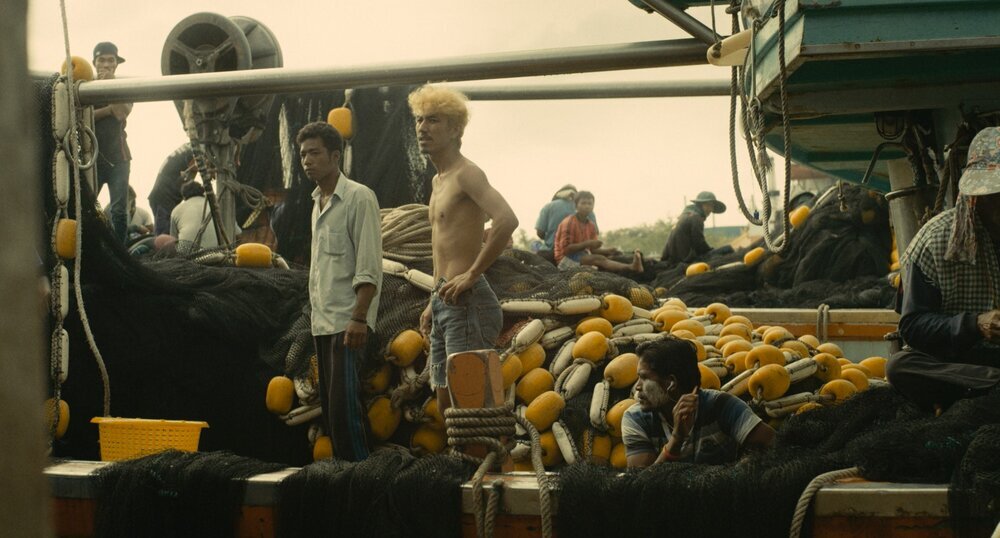Phuttiphong Aroonpheng
Manta Ray, Phuttiphong Aroonpheng (2018)
Phuttiphong Aroonpheng is a Thai cinematographer, screenwriter, editor, and film director. Having previously worked as a director of photography on several award-winning films, his feature film debut, Manta Ray, premiered at the Venice Film Festival, where it won Best Film - Orizzonti; Cairo, where it won Best Director; Taipei, where it won a Special Mention; and Thessaloniki, where it won Best Director and an Artistic Achievement Award.
In an exclusive interview for Filmatique, Phuttiphong Aroonpheng discusses the voicelessness of the Rohingyas, a prevalence of ghosts in his work, improvising on set, and his second feature, Morrison.
//
FILMATIQUE: Manta Ray, which traces an unlikely bond between a fisherman in a small, coastal village in Thailand, and an unnamed, mute man who washes up on shore, begins with a simple tribute: "To the Rohingyas." Can you please discuss the genesis of this film; when did you first have the idea to address the plight of the Rohingyas cinematically? How did the project evolve over time, into what it is today?
PHUTTIPHONG AROONPHENG: I first developed the project in late 2008/early 2009, during which time the Rohingya issue was still not widely known in Thailand. This changed after one particular incident when a rickety boat carrying a group of Rohingya refugees fleeing violence in Rakhine arrived near the coast of Thailand and was prevented by Thai authorities from coming ashore. The Thai government was widely condemned for its action, because following their refusal to let the boat land, it disappeared into the sea and all of its passengers drowned.
This became the first in a series of incidents that kept happening over and over during the coming years. The issue became controversial and sparked intense debates in society at large. A lot of people from the conservative side of the society vehemently opposed the idea of accepting refugees into the country, and had strong opinions about it. Many of them are my close friends and family members who grew up with me and were otherwise kind and caring people, and I was very surprised to see such a strong feeling of hatred and prejudice coming from them regarding people who are perceived as "different." It made me question a lot about who we are as a society.
So I set out to make a film dedicated to this group of voiceless people who are repeatedly marginalized and persecuted. I came up with the idea of having one of the main character not speaking, because in Thai society we never get to hear the voices of Rohingya refugees, both literally and figuratively.
Manta Ray, Phuttiphong Aroonpheng (2018)
FLMTQ: One of the most arresting elements of the film is its aesthetic approach—the textured, enveloping sound design; evocative visuals of both neon and natural worlds; a deliberate pacing in which characters are often held in close-up, communicating in a language more gestural than verbal. The power of Manta Ray lies in its particular form of encounter, suspending the spectator in an enhanced sensorial realm. Can you discuss the atmosphere you were seeking to create with this film, and specific ways you worked with your collaborators Chalermrat Kaweewattana, Nawarophaat Rungphiboonsophit, and Mathieu Gabry and Christine Ott, among others, to achieve that goal?
PA: I have worked with Nawarophaat a lot over the years—he was my regular Focus Puller when I was a DoP, and he shot my short film Ferris Wheel. We have a mutual understanding and work well together, and so that's why I asked him to be my DoP for my first film—which is also his first time as a DoP for a feature film.
Regarding the sound, this is where my approach is completely opposite from the visual. I come from a strong visual background, and had a lot of ideas on what kind of visual I wanted to achieve in the film. But for sound I really prefer to let my collaborator take center stage and interpret the way the film should sound based on their feeling and instinct. I have worked a lot with Chalermrat and fully trust him—for Snowdrops (Christine and Mathieu) it was the first time we collaborated; we worked on a long distance basis, which is one level of challenge we faced. But it was such a pleasure working with them and they created an absolutely stunning work that takes the film to another level.
Other collaborators who brought important contributions into the film's image and sound are: our colorist Yov Moor, sound editor Arnaud Rolland and mixer Charles Bussienne.
Manta Ray, Phuttiphong Aroonpheng (2018)
FLMTQ: The ecological looms large in Manta Ray, whether through haunting symphonies of the nocturnal forest, visuals of vast bodies of water, the film's surprising coda. What role does the non-human serve in your work?
PA: This is a very interesting question, because to be honest I had not really thought about how the non-human has such a presence in my work before. For Manta Ray, in the forest scenes and with the sparkling rocks on the ground at night, the starting point came from the news in 2015, right during the period when we started planning the production of the film. During that time, mass graves of Rohinyas were discovered in a forest in southern Thailand, and it remained a mystery who the victims were, why were they killed, and by whom. And so I wanted to evoke the feeling that the forests in the area are now haunted by mysterious bodies buried in the ground.
But actually this question made me think about how ghosts and spirits do seem to have a recurring role in my other films. In one of my shorts, Tale of Heaven, the main theme is the ghost of my father who had recently passed away. Also an upcoming project that I am developing revolves around another "ghost," a sort of paternal figure for another main character. It is very interesting to think about, maybe all this happened on a subconscious level.
FLMTQ: Manta Ray is furthermore anchored in stellar lead performances from Aphisit Hama and Wanlop Rungkumjad, and a compelling turn by Rasmee Wayrana. What level of acting experience did they have prior to this film? Can you briefly discuss your casting process; how did you find your actors, and how did you work with them to bring their characters to life?
PA: Among the three lead cast members, Wanlop is the only one who is an experienced actor. Both Aphisit and Rasmee were acting for the first time on camera.
I've known Wanlop well for a long time and asked him to be the lead actor in a pilot video we made when we were still developing the project and raising funds. He did such wonderful work that I then had a hard time imagining having anyone else for this role. During the period when we were about to start shooting, he had already decided to quit acting actually, and turned us down, which was very disappointing. But after some further back-and-forth talks, he finally decided to take on the role at the last moment, which made us very happy.
Aphisit came to us through an open-call casting. I wanted to have a new actor for the role of Thongchai, and the challenge was also that he would have to act throughout the film without speaking a word. We had a lot of people come for the casting, and Aphisit was among the last ones who did the audition.
For the lead actress, I wanted someone who could really sing, and discovered Rasmee because my wife is a fan of her music. I watched her performance on YouTube and was mesmerized by her voice and her personality, and so we approached her to see if she might be interested in playing the role. Luckily for us, she accepted.
We did not do a lot of acting workshops because I wanted all the actors to remain natural and spontaneous throughout the process. We did a lot of improvisation on set too.
Manta Ray, Phuttiphong Aroonpheng (2018)




